Recycle Mike’s happy days Day 3 & Day 4课件(33张PPT)
文档属性
| 名称 | Recycle Mike’s happy days Day 3 & Day 4课件(33张PPT) | 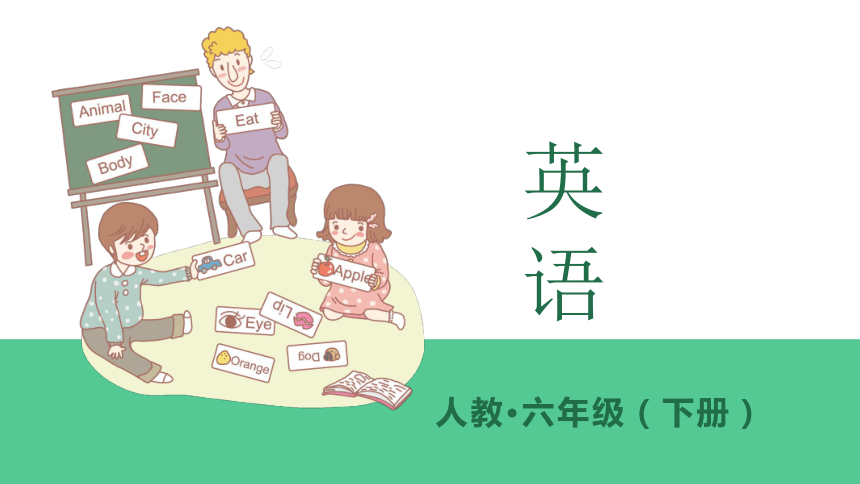 | |
| 格式 | zip | ||
| 文件大小 | 1.5MB | ||
| 资源类型 | 教案 | ||
| 版本资源 | 人教版(PEP) | ||
| 科目 | 英语 | ||
| 更新时间 | 2020-04-14 15:52:19 | ||
图片预览

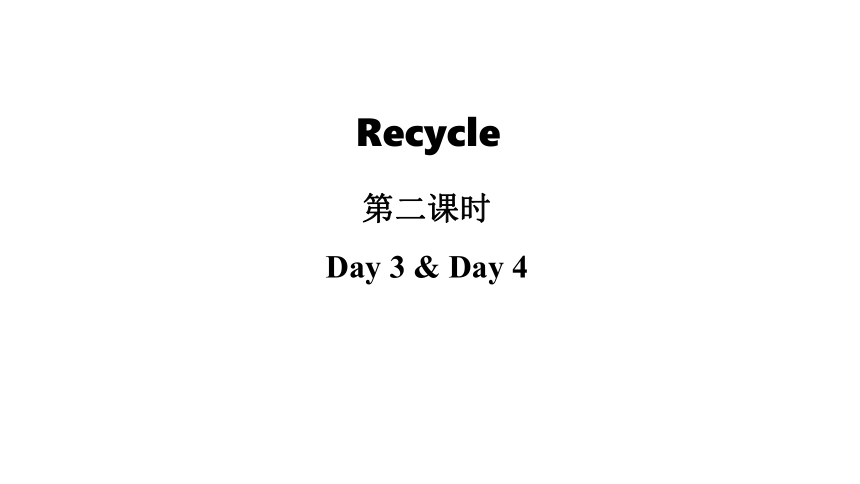
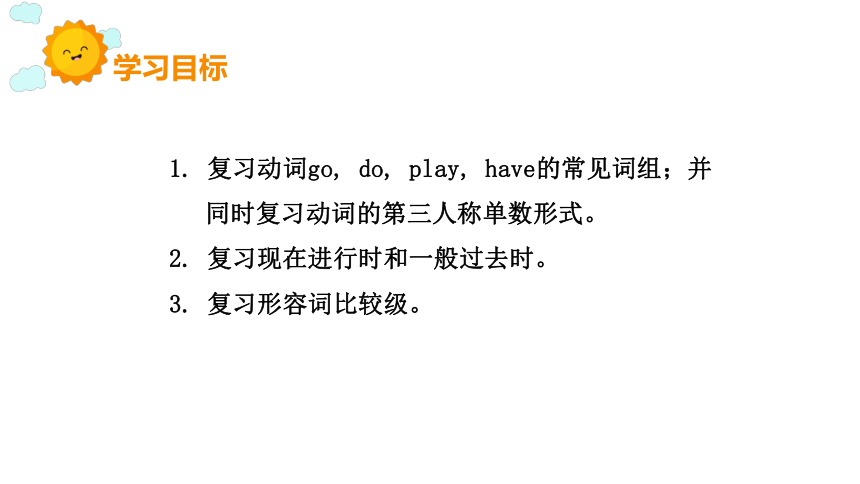
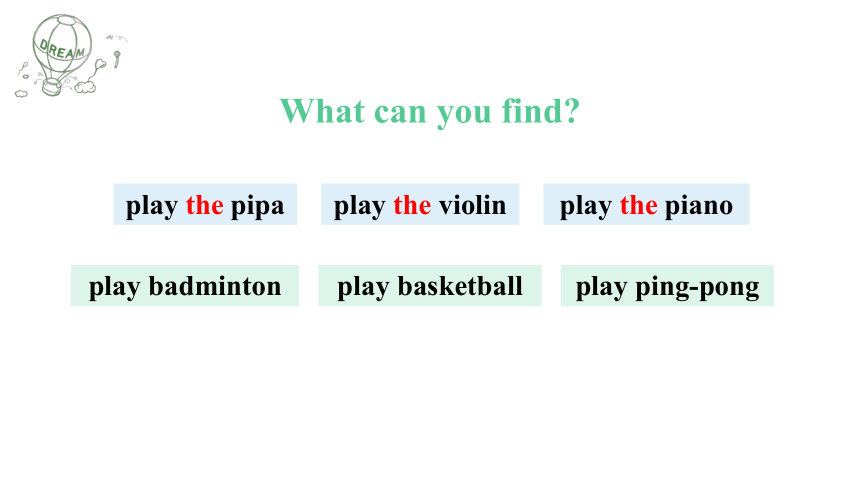

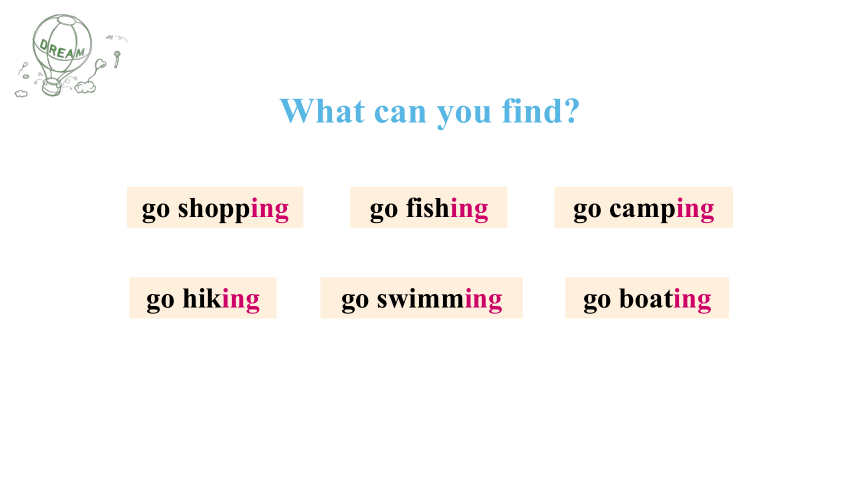
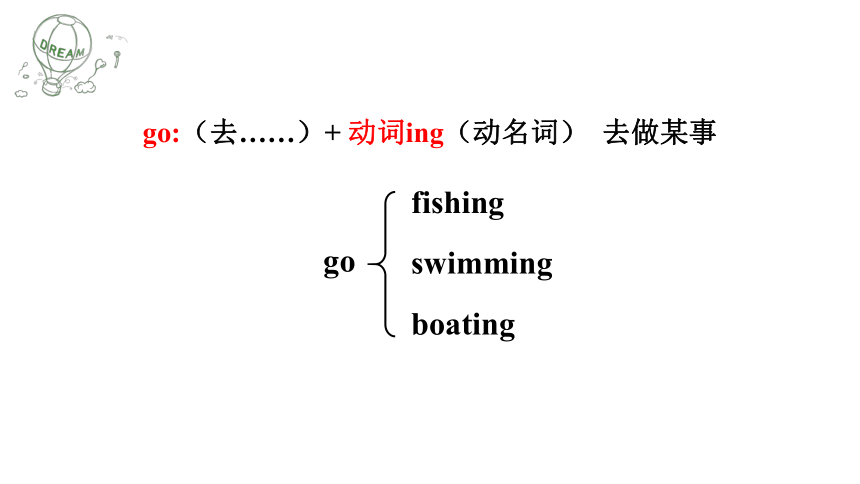
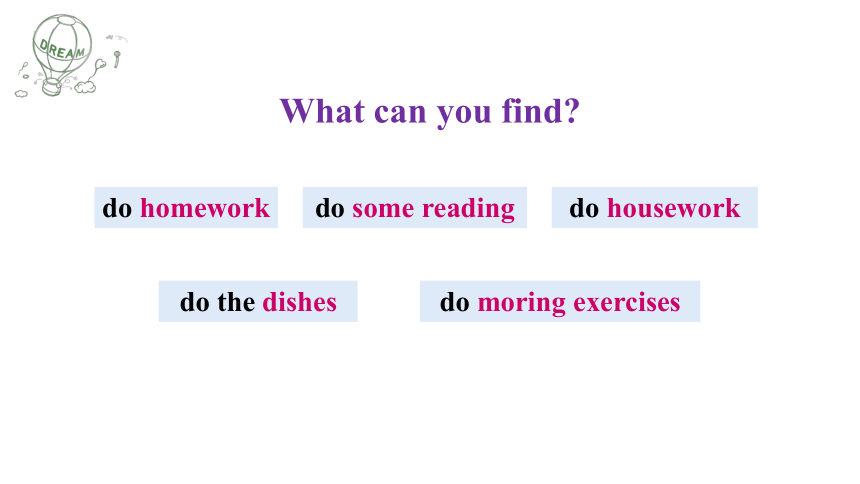
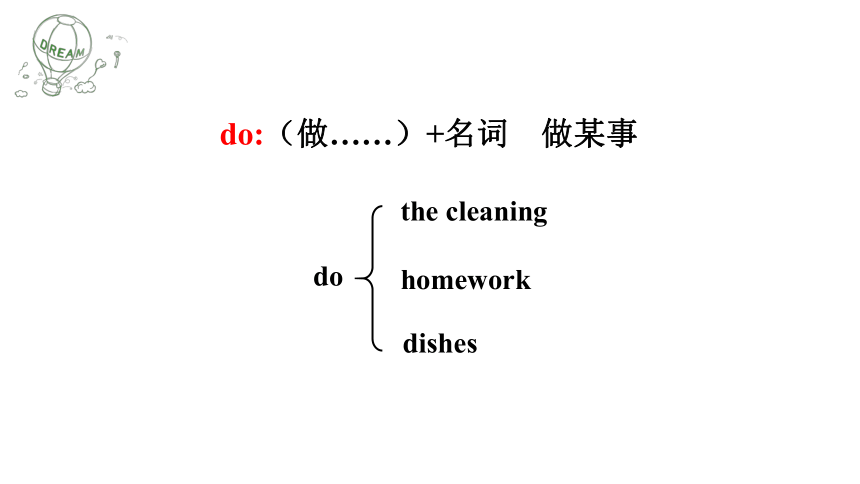
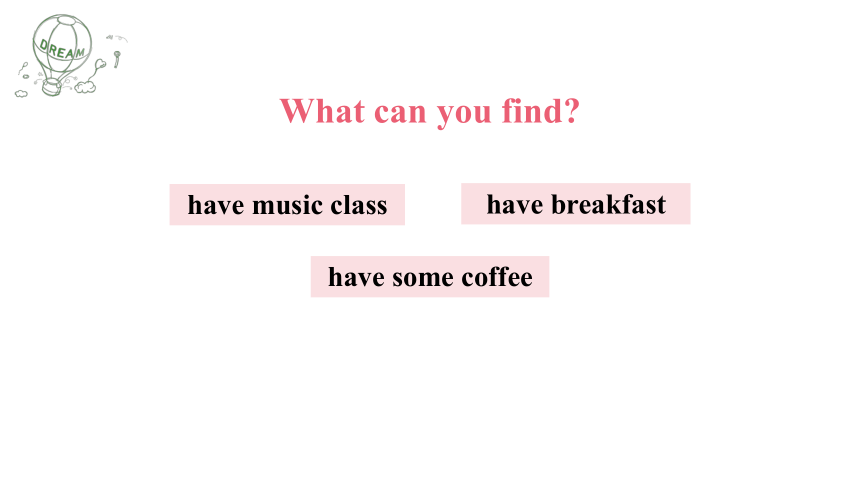
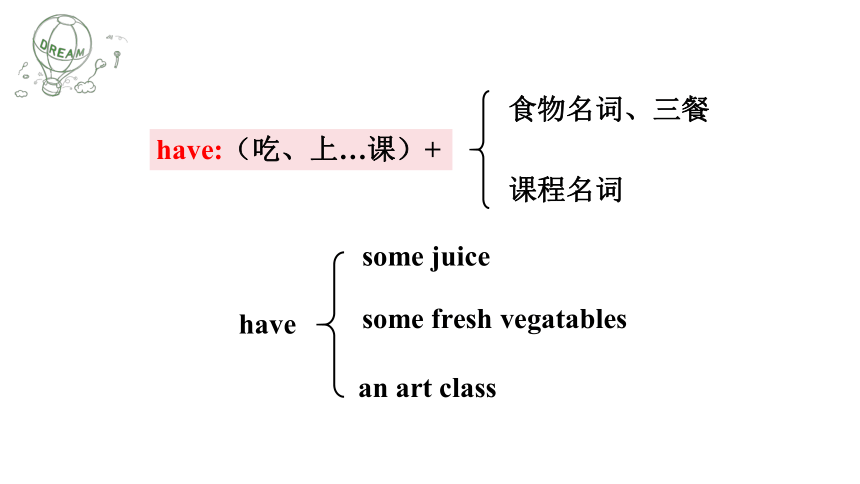
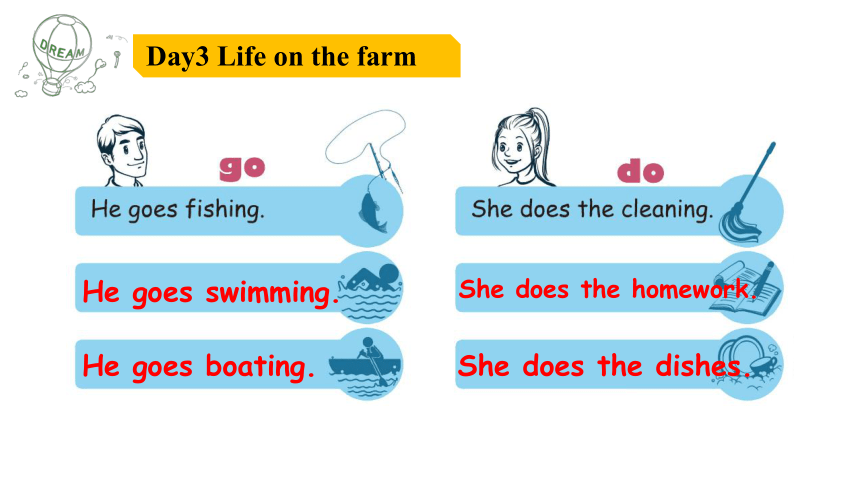
文档简介
课件33张PPT。人教·六年级(下册)英 语Recycle第二课时
Day 3 & Day 41. 复习动词go, do, play, have的常见词组;并同时复习动词的第三人称单数形式。
2. 复习现在进行时和一般过去时。
3. 复习形容词比较级。学习目标What can you find?play the pipaplay the violinplay the pianoplay badmintonplay basketballplay ping-pong运动名词the+乐器名词go shoppinggo fishinggo campinggo hikinggo swimminggo boatingWhat can you find?go:(去……)+ 动词ing(动名词) 去做某事do homeworkdo some readingdo houseworkdo the dishesdo moring exercisesWhat can you find?do:(做……)+名词 做某事have music classhave some coffeehave breakfastWhat can you find?食物名词、三餐课程名词Day3 Life on the farmHe goes swimming.He goes boating.She does the dishes.She does the homework.He plays ping-pong.He plays basketball.They have some fresh vegetables.They have drawing class.句子为一般现在时,如果主语是第三人称单(he/she/it或者其他人名),动词需变第三人称单数,即加s ,es或 ies例句:She often plays ping-pong.
My brother usually gets up at 6:00.
The dog often eats meat.动词变第三人称单数规则1. do— 2. play—
3. wash— 4. watch—
5. study— 6. make—
7. take— 8. go—
9. send— 10. like— 请将下列动词变成第三人称单数doesplayswasheswatchesstudiesmakestakesgoessendslikes1. 用法:表示现在某一时刻或某段时间正在进行的动作或发生的事情。
2. 结构:主语+be动词+动词-ing+其他.
例如:I am reading a book.我正在读书。
Linda is flying a kite.琳达正在放风筝。现在进行时3.现在分词的构成规则:
(1)一般情况下直接在词尾加-ing。
例如:do—doing play—playing
(2)以不发音的字母e结尾的动词,去e再加-ing。
例如:make—making dance—dancing
(3)以重读闭音节结尾的动词,双写词尾的辅音字母再加-ing。
例如:swim—swimming run—runningMrs Booth is playing the pipa.Mike is drawing pictures.They are having a picnic.Bill is playing the ping-pong.选词填空( )1. Look,she is ________ the pictures.
A. draws B. draw C. drawing
( )2. My father is ________ an E-mail now.
A. writeing B. writing C. write
( )3. Look,the dogs ________ fighting(打架).
A. am B. is C. are
( )4. I see the boy is ________.
A. runing B. running C. runCBCBDay4 Mike's day on the farmWhat did Mike do on the farm?had breakfastcleaned my roomwent fishingread a bookplayed computer gamesslept一般过去时1. 概述:一般过去时表示在过去某个时间发生的动作或存在的状态,也表示过去经常或反复发生的动作。常与表示过去的时间状语连用,如yesterday/last week等。2.动词过去式的变化规律:
(1)一般情况下直接在词尾加-ed,如:call—called。
(2)以不发音的字母e结尾的动词,加-d,如:live—lived。
(3)以“辅音字母+y”结尾的动词,变y为i再加-ed,
如:study—studied。
(4)以重读闭音节结尾,且末尾只有一个辅音字母的动词,
双写末尾的辅音字母再加-ed,如:stop—stopped。
(5)有些动词的过去式是不规则变化的,如:come—came,
go—went,take—took等。 用所给词的适当形式填空。
1.My father ________(is) a pilot ten years ago.
2.What ________(do) you do yesterday?
3.She __________(watch) TV last night.
4.Did your mother ______(go) to the shopping centre this morning?
5. John ________(fly) a kite last Sunday.wasdidwatchedgoflied1.Show one picture.Now read about Bill and Mike's game. Bill:It's an elephant. It's big.2. Get another picture, but don't turn it over. Bill: Guess! Is this bigger or smaller than the elephant?
Mike: I think it's bigger than the elephant.
Bill: No, it isn't. It's smaller. Look. It's a tiger. Bill: Look. The other card is a whale.
Mike: So the whale is the biggest, and the
tiger is the smallest.3. Show the last picture.形容词的比较级和最高级1. 形容词比较级的句型:
A+be动词+形容词比较级+than+B.
用于两者间进行比较,表示“A比B……”。
例如:He is taller than me. 他比我高。
This bag is bigger than that one.
这个包比那个大。形容词或副词比较级的变化规则口诀:
原级变成比较级,er结尾要牢记;
一般情况直接加,单辅重闭双写加;
辅音加y双写加,以e结尾去e加;
少数部分双音节,规则如同单音节。
其余双音多音节,词前加more就可以,
不规则词没几个,它们需要特殊记。2. 形容词最高级的句型:
人/物+be动词 +the+形容词最高级+名词+表示范围的短语或从句。用于两个以上的人或物进行比较。
例如:
She is the tallest student in her class.
This is the biggest ball in the picture.形容词最高级的变化规则与比较级相似,区别是比较级以-er结尾,最高级以-est结尾并在前面加the。
注意:双音节和多音节形容词的最高级需在前面加most来构成。根据提示完成句子。
1.他是学校里最聪明的学生。(smart)
He is ___________________ in the school.
2.你的眼睛比我的大。(big)
Your eyes are ___________________.
3.我的妹妹比哥哥有趣。(interesting)
My sister is _____________________ my brother.more interesting thanbigger than minethe smartest studentThank you !
Day 3 & Day 41. 复习动词go, do, play, have的常见词组;并同时复习动词的第三人称单数形式。
2. 复习现在进行时和一般过去时。
3. 复习形容词比较级。学习目标What can you find?play the pipaplay the violinplay the pianoplay badmintonplay basketballplay ping-pong运动名词the+乐器名词go shoppinggo fishinggo campinggo hikinggo swimminggo boatingWhat can you find?go:(去……)+ 动词ing(动名词) 去做某事do homeworkdo some readingdo houseworkdo the dishesdo moring exercisesWhat can you find?do:(做……)+名词 做某事have music classhave some coffeehave breakfastWhat can you find?食物名词、三餐课程名词Day3 Life on the farmHe goes swimming.He goes boating.She does the dishes.She does the homework.He plays ping-pong.He plays basketball.They have some fresh vegetables.They have drawing class.句子为一般现在时,如果主语是第三人称单(he/she/it或者其他人名),动词需变第三人称单数,即加s ,es或 ies例句:She often plays ping-pong.
My brother usually gets up at 6:00.
The dog often eats meat.动词变第三人称单数规则1. do— 2. play—
3. wash— 4. watch—
5. study— 6. make—
7. take— 8. go—
9. send— 10. like— 请将下列动词变成第三人称单数doesplayswasheswatchesstudiesmakestakesgoessendslikes1. 用法:表示现在某一时刻或某段时间正在进行的动作或发生的事情。
2. 结构:主语+be动词+动词-ing+其他.
例如:I am reading a book.我正在读书。
Linda is flying a kite.琳达正在放风筝。现在进行时3.现在分词的构成规则:
(1)一般情况下直接在词尾加-ing。
例如:do—doing play—playing
(2)以不发音的字母e结尾的动词,去e再加-ing。
例如:make—making dance—dancing
(3)以重读闭音节结尾的动词,双写词尾的辅音字母再加-ing。
例如:swim—swimming run—runningMrs Booth is playing the pipa.Mike is drawing pictures.They are having a picnic.Bill is playing the ping-pong.选词填空( )1. Look,she is ________ the pictures.
A. draws B. draw C. drawing
( )2. My father is ________ an E-mail now.
A. writeing B. writing C. write
( )3. Look,the dogs ________ fighting(打架).
A. am B. is C. are
( )4. I see the boy is ________.
A. runing B. running C. runCBCBDay4 Mike's day on the farmWhat did Mike do on the farm?had breakfastcleaned my roomwent fishingread a bookplayed computer gamesslept一般过去时1. 概述:一般过去时表示在过去某个时间发生的动作或存在的状态,也表示过去经常或反复发生的动作。常与表示过去的时间状语连用,如yesterday/last week等。2.动词过去式的变化规律:
(1)一般情况下直接在词尾加-ed,如:call—called。
(2)以不发音的字母e结尾的动词,加-d,如:live—lived。
(3)以“辅音字母+y”结尾的动词,变y为i再加-ed,
如:study—studied。
(4)以重读闭音节结尾,且末尾只有一个辅音字母的动词,
双写末尾的辅音字母再加-ed,如:stop—stopped。
(5)有些动词的过去式是不规则变化的,如:come—came,
go—went,take—took等。 用所给词的适当形式填空。
1.My father ________(is) a pilot ten years ago.
2.What ________(do) you do yesterday?
3.She __________(watch) TV last night.
4.Did your mother ______(go) to the shopping centre this morning?
5. John ________(fly) a kite last Sunday.wasdidwatchedgoflied1.Show one picture.Now read about Bill and Mike's game. Bill:It's an elephant. It's big.2. Get another picture, but don't turn it over. Bill: Guess! Is this bigger or smaller than the elephant?
Mike: I think it's bigger than the elephant.
Bill: No, it isn't. It's smaller. Look. It's a tiger. Bill: Look. The other card is a whale.
Mike: So the whale is the biggest, and the
tiger is the smallest.3. Show the last picture.形容词的比较级和最高级1. 形容词比较级的句型:
A+be动词+形容词比较级+than+B.
用于两者间进行比较,表示“A比B……”。
例如:He is taller than me. 他比我高。
This bag is bigger than that one.
这个包比那个大。形容词或副词比较级的变化规则口诀:
原级变成比较级,er结尾要牢记;
一般情况直接加,单辅重闭双写加;
辅音加y双写加,以e结尾去e加;
少数部分双音节,规则如同单音节。
其余双音多音节,词前加more就可以,
不规则词没几个,它们需要特殊记。2. 形容词最高级的句型:
人/物+be动词 +the+形容词最高级+名词+表示范围的短语或从句。用于两个以上的人或物进行比较。
例如:
She is the tallest student in her class.
This is the biggest ball in the picture.形容词最高级的变化规则与比较级相似,区别是比较级以-er结尾,最高级以-est结尾并在前面加the。
注意:双音节和多音节形容词的最高级需在前面加most来构成。根据提示完成句子。
1.他是学校里最聪明的学生。(smart)
He is ___________________ in the school.
2.你的眼睛比我的大。(big)
Your eyes are ___________________.
3.我的妹妹比哥哥有趣。(interesting)
My sister is _____________________ my brother.more interesting thanbigger than minethe smartest studentThank you !
